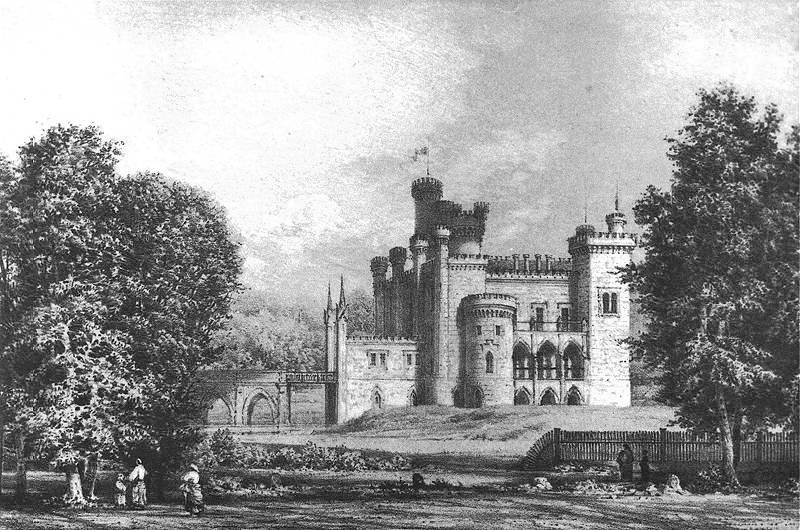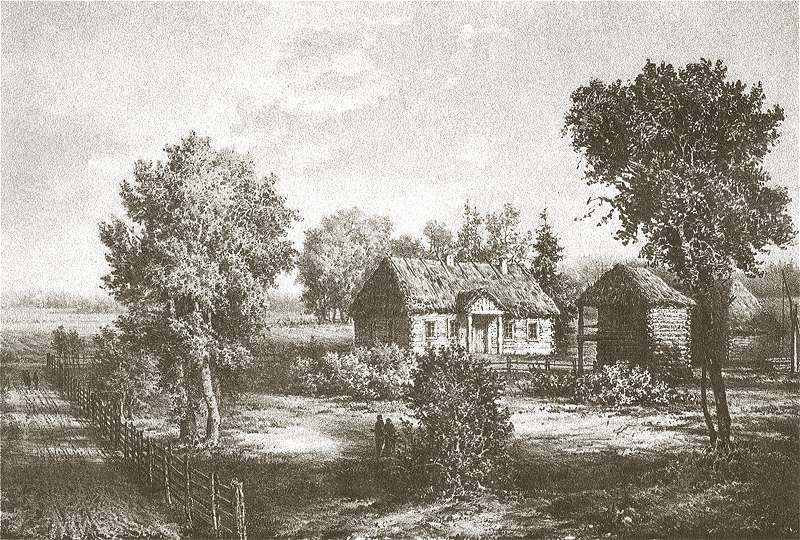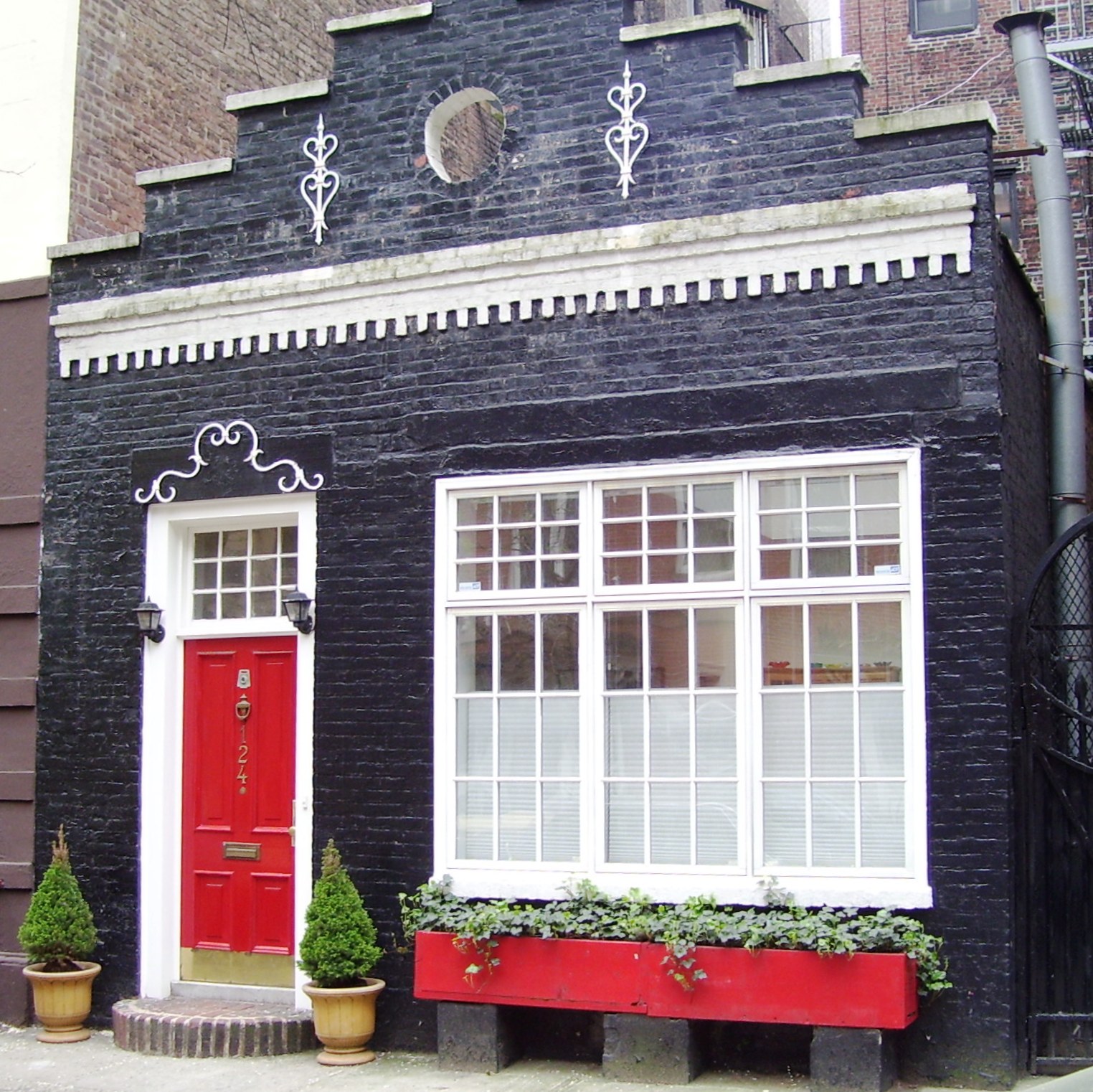|
Kórnik Castle
Kórnik Castle (Polish: Zamek w Kórniku or Zamek Kórnicki) is a castle in the Polish town of Kórnik, which was constructed in the 14th century. The current neogothic design and remodeling was done in 1855 partly on the basis of architect Karl Friedrich Schinkel's plans for Tytus Działyński and the son Jan Kanty Działyński. After last member of Działyński family Jan Kanty Działyński's death, his brother-in-law Count Władysław Zamoyski received the castle in Jan's will. Shortly before his death in 1924, the childless count willed the castle, along with an extensive art collection and the Kórnik Arboretum to the Polish state. The castle currently houses a museum and the Kórnik Library. It's one of Poland's official national Historic Monuments (''Pomnik historii''), as designated July 11, 2011 and tracked by the National Heritage Board of Poland. Exterior of the castle The current look of the castle resembles Gothic Revival architecture, one of the popular histor ... [...More Info...] [...Related Items...] OR: [Wikipedia] [Google] [Baidu] |
Kórnik
Kórnik (german: Kurnik, 1939-45 Burgstadt) is a town with about 7,600 inhabitants (2018), located in western Poland, about south-east of the city of Poznań. It is one of the major tourist attractions of the Wielkopolska region and the Greater Poland Voivodeship because of the historical castle and arboretum, which is amongst the oldest and richest collections of trees and shrubs in Poland. History Until 1961 Kórnik was separate from Bnin, situated just 1 km apart. Both towns were founded in the Middle Ages (Bnin gained town rights in 1395, and Kórnik in 1426), but Bnin lost its town rights in 1934, and in 1961 it became part of Kórnik. The enlarged town also includes the former settlement of Prowent, birthplace of the Nobel Prize-winning poet Wisława Szymborska. Mieszko I of Poland founded an early Polish stronghold in present-day Bnin in the 10th century. Kórnik was first mentioned in documents in the 12th century, while the town of Bnin started to develop in ... [...More Info...] [...Related Items...] OR: [Wikipedia] [Google] [Baidu] |
Royal Pavilion
The Royal Pavilion, and surrounding gardens, also known as the Brighton Pavilion, is a Grade I listed former royal residence located in Brighton, England. Beginning in 1787, it was built in three stages as a seaside retreat for George, Prince of Wales, who became the Prince Regent in 1811, and King George IV in 1820. It is built in the Indo-Saracenic style prevalent in India for most of the 19th century. The current appearance of the Pavilion, with its domes and minarets, is the work of architect John Nash, who extended the building starting in 1815. George IV's successors William IV, and Victoria, also used the Pavilion, but Queen Victoria decided that Osborne House should be the royal seaside retreat, and the Pavilion was sold to the city of Brighton in 1850. On 1 October 2020, management and operation of the Royal Pavilion & Museums' buildings and collections were transferred from Brighton & Hove City Council to a new charity: the Royal Pavilion & Museums Trust (RPMT). ... [...More Info...] [...Related Items...] OR: [Wikipedia] [Google] [Baidu] |
Adam Mickiewicz
Adam Bernard Mickiewicz (; 24 December 179826 November 1855) was a Polish poet, dramatist, essayist, publicist, translator and political activist. He is regarded as national poet in Poland, Lithuania and Belarus. A principal figure in Polish Romanticism, he is one of Poland's " Three Bards" ( pl, Trzej Wieszcze) and is widely regarded as Poland's greatest poet. He is also considered one of the greatest Slavic and European poets and has been dubbed a "Slavic bard". A leading Romantic dramatist, he has been compared in Poland and Europe to Byron and Goethe. He is known chiefly for the poetic drama '' Dziady'' (''Forefathers' Eve'') and the national epic poem '' Pan Tadeusz''. His other influential works include ''Konrad Wallenrod'' and ''Grażyna''. All these served as inspiration for uprisings against the three imperial powers that had partitioned the Polish–Lithuanian Commonwealth out of existence. Mickiewicz was born in the Russian-partitioned territories of the forme ... [...More Info...] [...Related Items...] OR: [Wikipedia] [Google] [Baidu] |
Porcelain
Porcelain () is a ceramic material made by heating substances, generally including materials such as kaolinite, in a kiln to temperatures between . The strength and translucence of porcelain, relative to other types of pottery, arises mainly from vitrification and formation of the mineral mullite within the body at these high temperatures. Though definitions vary, porcelain can be divided into three main categories: hard-paste, soft-paste, and bone china. The category that an object belongs to depends on the composition of the paste used to make the body of the porcelain object and the firing conditions. Porcelain slowly evolved in China and was finally achieved (depending on the definition used) at some point about 2,000 to 1,200 years ago; it slowly spread to other East Asian countries, then to Europe, and eventually to the rest of the world. Its manufacturing process is more demanding than that for earthenware and stoneware, the two other main types of pottery, an ... [...More Info...] [...Related Items...] OR: [Wikipedia] [Google] [Baidu] |
Militaria
Militaria, also known as military memorabilia, are military equipment which are collected for their historical significance. Such items include firearms, swords, sabres, knives, bayonets, helmets and other equipment such as uniforms, military orders and decorations and insignia. The act of collecting militaria has roots in souvenir hunting, a practice first made popular among soldiers during World War I. During the war, soldiers would walk through battlefields and trenches, taking military equipment and personal items from enemy POW's or, in most cases, dead bodies. Soldiers would send these items home to loved ones through post or in their belongings upon going home. Militaria collecting became nationalized during and at the end of World War I, through the 1917-1918 War Bonds Drive and the 1919 Victory Loan Drive. Captured German Pickelhauben, Stahlhelm The ''Stahlhelm'' () is a German military steel combat helmet intended to provide protection against shrapnel and ... [...More Info...] [...Related Items...] OR: [Wikipedia] [Google] [Baidu] |
Shrub
A shrub (often also called a bush) is a small-to-medium-sized perennial woody plant. Unlike herbaceous plants, shrubs have persistent woody stems above the ground. Shrubs can be either deciduous or evergreen. They are distinguished from trees by their multiple stems and shorter height, less than tall. Small shrubs, less than 2 m (6.6 ft) tall are sometimes termed as subshrubs. Many botanical groups have species that are shrubs, and others that are trees and herbaceous plants instead. Some definitions state that a shrub is less than and a tree is over 6 m. Others use as the cut-off point for classification. Many species of tree may not reach this mature height because of hostile less than ideal growing conditions, and resemble a shrub-sized plant. However, such species have the potential to grow taller under the ideal growing conditions for that plant. In terms of longevity, most shrubs fit in a class between perennials and trees; some may only last about fiv ... [...More Info...] [...Related Items...] OR: [Wikipedia] [Google] [Baidu] |
Tree
In botany, a tree is a perennial plant with an elongated stem, or trunk, usually supporting branches and leaves. In some usages, the definition of a tree may be narrower, including only woody plants with secondary growth, plants that are usable as lumber or plants above a specified height. In wider definitions, the taller palms, tree ferns, bananas, and bamboos are also trees. Trees are not a taxonomic group but include a variety of plant species that have independently evolved a trunk and branches as a way to tower above other plants to compete for sunlight. The majority of tree species are angiosperms or hardwoods; of the rest, many are gymnosperms or softwoods. Trees tend to be long-lived, some reaching several thousand years old. Trees have been in existence for 370 million years. It is estimated that there are some three trillion mature trees in the world. A tree typically has many secondary branches supported clear of the ground by the trunk. This trunk typi ... [...More Info...] [...Related Items...] OR: [Wikipedia] [Google] [Baidu] |
Taxa
In biology, a taxon ( back-formation from '' taxonomy''; plural taxa) is a group of one or more populations of an organism or organisms seen by taxonomists to form a unit. Although neither is required, a taxon is usually known by a particular name and given a particular ranking, especially if and when it is accepted or becomes established. It is very common, however, for taxonomists to remain at odds over what belongs to a taxon and the criteria used for inclusion. If a taxon is given a formal scientific name, its use is then governed by one of the nomenclature codes specifying which scientific name is correct for a particular grouping. Initial attempts at classifying and ordering organisms (plants and animals) were set forth in Carl Linnaeus's system in ''Systema Naturae'', 10th edition (1758), as well as an unpublished work by Bernard and Antoine Laurent de Jussieu. The idea of a unit-based system of biological classification was first made widely available in 1805 in the ... [...More Info...] [...Related Items...] OR: [Wikipedia] [Google] [Baidu] |
Europe
Europe is a large peninsula conventionally considered a continent in its own right because of its great physical size and the weight of its history and traditions. Europe is also considered a subcontinent of Eurasia and it is located entirely in the Northern Hemisphere and mostly in the Eastern Hemisphere. Comprising the westernmost peninsulas of Eurasia, it shares the continental landmass of Afro-Eurasia with both Africa and Asia. It is bordered by the Arctic Ocean to the north, the Atlantic Ocean to the west, the Mediterranean Sea to the south and Asia to the east. Europe is commonly considered to be separated from Asia by the watershed of the Ural Mountains, the Ural River, the Caspian Sea, the Greater Caucasus, the Black Sea and the waterways of the Turkish Straits. "Europe" (pp. 68–69); "Asia" (pp. 90–91): "A commonly accepted division between Asia and Europe ... is formed by the Ural Mountains, Ural River, Caspian Sea, Caucasus Mountains, and the Blac ... [...More Info...] [...Related Items...] OR: [Wikipedia] [Google] [Baidu] |
Poland
Poland, officially the Republic of Poland, , is a country in Central Europe. Poland is divided into Voivodeships of Poland, sixteen voivodeships and is the fifth most populous member state of the European Union (EU), with over 38 million people, and the List of European countries by area, seventh largest EU country, covering a combined area of . It extends from the Baltic Sea in the north to the Sudetes and Carpathian Mountains in the south, bordering seven countries. The territory is characterised by a varied landscape, diverse ecosystems, and Temperate climate, temperate transitional climate. The capital and List of cities and towns in Poland, largest city is Warsaw; other major cities include Kraków, Wrocław, Łódź, Poznań, and Gdańsk. Prehistory and protohistory of Poland, Humans have been present on Polish soil since the Lower Paleolithic, with continuous settlement since the end of the Last Glacial Period over 12,000 years ago. Culturally diverse throughout ... [...More Info...] [...Related Items...] OR: [Wikipedia] [Google] [Baidu] |
Carriage House
A carriage house, also called a remise or coach house, is an outbuilding which was originally built to house horse-drawn carriages and the related tack. In Great Britain the farm building was called a cart shed. These typically were open fronted, single story buildings, with the roof supported by regularly spaced pillars. They often face away from the farmyard and may be found close to the stables and roadways, giving direct access to the fields. Current usages In modern usage, the term "carriage house" has taken on several additional, somewhat overlapping meanings: * Buildings that were originally true carriage houses that have been converted to other uses such as secondary suites, apartments, guest houses, automobile garages, offices, workshops, retail shops, bars, restaurants, or storage buildings. * Purpose-built secondary homes, also called accessory dwelling units or detached dwelling units, on the same lot as a primary residence. They have completely separat ... [...More Info...] [...Related Items...] OR: [Wikipedia] [Google] [Baidu] |
Façade
A façade () (also written facade) is generally the front part or exterior of a building. It is a loan word from the French (), which means 'frontage' or ' face'. In architecture, the façade of a building is often the most important aspect from a design standpoint, as it sets the tone for the rest of the building. From the engineering perspective, the façade is also of great importance due to its impact on energy efficiency. For historical façades, many local zoning regulations or other laws greatly restrict or even forbid their alteration. Etymology The word is a loanword from the French , which in turn comes from the Italian , from meaning 'face', ultimately from post-classical Latin . The earliest usage recorded by the '' Oxford English Dictionary'' is 1656. Façades added to earlier buildings It was quite common in the Georgian period for existing houses in English towns to be given a fashionable new façade. For example, in the city of Bath, The Bunch of Grapes ... [...More Info...] [...Related Items...] OR: [Wikipedia] [Google] [Baidu] |

.jpg)

.jpg)
.jpg)




.jpg)